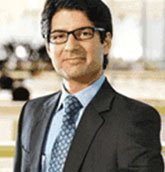6 MinsSep 02, 2022
To plan for your envisioned financial goals, there are a variety of investment avenues. But if you are looking at earning fixed, secured and steady returns without markets risk, fixed deposits––also known as Term Deposits ––
are the best choice.

Apart from financial goals, even contingency and tax-saving needs can be addressed by investing in Fixed Deposits (FDs). That’s why fixed deposits occupy an important place
in the portfolio.
Along with investing a lump sum, say you wish to save and invest regularly for a particular purpose, you also have the option of a bank Recurring Deposit (RD), which also is a Term Deposit. Systematic investments in bank RD could help you build a contingency fund as well as address any other short-term financial goal/s.
All that is required is prudent investment planning, wherein you,
the investor, designate the FD or RD for the respective purpose. Depending on the goals you’re addressing, that many number of FDs or RDs could be held. So, there isn’t a magic number as to how many FDs or RDs one must hold. If
you plan well, your liquidity needs will be taken care of. And, if at all you are in dire need of money, you can always take a loan against FD as opposed to prematurely
encashing them.
Premature encashment of the FD or RD puts brakes in the process of the power of compounding. Hence, choose your plan (cumulative or interest pay-out, which could be monthly, quarterly, etc.) and the investment tenure thoughtfully,
taking into consideration your liquidity and cash-flow requirements.
Say you are planning for a short-term goal of paying your child’s school fees a year from now. In this case, it would be sensible to open an RD by selecting the
tenure accordingly and receiving the cumulative proceeds at maturity. On the other hand, if you are, say, a senior citizen who would like to draw a regular source of income, then opting for monthly or quarterly interest pay-out from the FD
directly into your bank account may prove to be sensible to manage your cash-flow needs.
To maximise returns from bank FDs or RDs, here are a few points to note:
- Make it a point to lock-in money via a bank FD when interest rates are competitive so that it can yield a better rate of return and possibly counter inflation.
- Prefer auto FDs or RD, wherein the money is automatically transferred in favour of the Term Deposit from your Savings bank account.
- Paying attention to your liquidity needs, ladder your FDs. FD laddering is a strategy wherein you spread your lump sum investment across maturities. Say, you have an investible surplus of Rs. 5 lakh; this can be deployed by laddering your
investments as under:
| FD No. | Investment Amount (in Rs) | Maturity Period | Interest Rate (%) | Interest earned (in Rs) | Maturity Proceed (in Rs) |
|---|
| 1 | 100,000 | 1 year | 5.45 | 5,562 | 105,562 |
| 2 | 100,000 | 2 years | 5.70 | 11,985 | 111,985 |
| 3 | 100,000 | 3 years | 5.70 | 18,506 | 118,506 |
| 4 | 100,000 | 4 years | 5.70 | 25,407 | 125,407 |
| 5 | 100,000 | 5 years | 5.75 | 33,036 | 133,036 |
| Total | 500,000 | | | 94,496 | 594,496 |
The interest rates considered are for deposits less than Rs 5 crore offered currently by Axis Bank. (For illustration purposes only)
You don't need to invest an equal sum across maturity periods; you may invest a bigger sum for a period that
offers higher Fixed Deposit Interest Rate.
[Also Read:Open a Digital FD in minute]
The noteworthy point about the FD laddering strategy is that with one FD maturing every year, you will have the maturity proceeds available to use (for whatever purpose). Plus, the interest earned would be higher for longer maturities enabling
you to earn potentially higher returns. To know how much returns your investment in a bank FD will earn, use Axis Bank’s FD calculator.
Currently, in times when interest rates in the
economy are likely to move up, following an FD laddering strategy can potentially help you earn better returns.
At maturity, if you don’t need the money immediately, renew the FD for the desired period. This shall support the power
of compounding and help you build a bigger corpus.
As you may know, the interest earned on FDs and RDs is taxable. If you are a non-senior citizen and the interest income exceeds Rs. 40,000 in a financial year, the bank first deducts
tax at the source. For senior citizens, this threshold limit is Rs. 50,000. If you furnish your PAN, TDS is 10%, otherwise it is 20%. However, to avoid TDS, you may furnish a declaration under Section 197A of the Income Tax Act in Form 15-G
(for general or non-senior citizens) or Form 15-H (for senior citizens), as applicable.
Amidst volatile equity markets, holding a Term Deposit can offer you the needed financial security. Irrespective of whether you are a risk-taker or
a risk-averse investor, it would be appropriate to allocate a portion of your investible surplus into Term Deposits. So, book your bank FD today!
Disclaimer: This article has been authored by PersonalFN, a Mumbai-based Financial Planning and Mutual Fund research firm. Axis Bank doesn't influence any views of the author in any way. Axis Bank & PersonalFN shall not be responsible for any direct / indirect loss or liability incurred by the reader for taking any financial decisions based on the contents and information. Please consult your financial advisor before making any financial decision.
















